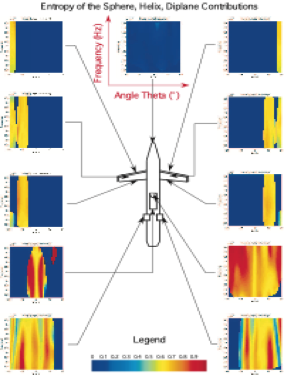
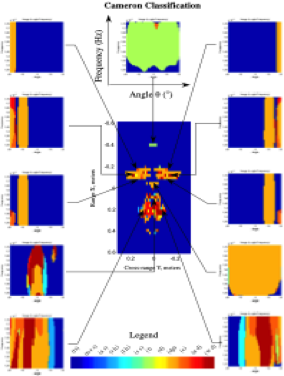
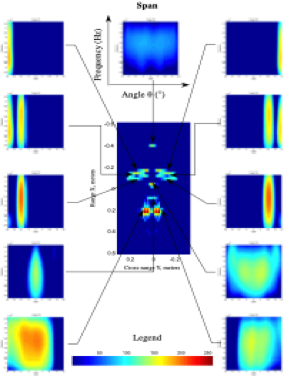
• Supervision of Emmanuelle Jay Ph.D. (1998-2001) entitled "Detection in non-Gaussian Environment" in collaboration with Patrick Duvaut (main advisor) and David Declercq from ETIS Lab in ENSEA. This thesis has been defended with Merit (Très Honorable avec les félicitations du jury) in June 2002 in Cergy-Pontoise University (Defense presentation). Finance Research Engineer in LBPAM, France
For a long time, radar echoes coming from the various returns of the transmitted signal on many objects of the environment (clutter) have been exclusively modelled by Gaussian vectors. The related optimal detection procedure was then performed by the classical matched filter. Then, the technological improvement of radar systems showed that the true nature of the clutter could not be considered as Gaussian any more. Though the optimality of the matched filter is no more valid in such cases, CFAR techniques (Constant False Alarm Rate) were proposed for this detector in order to adapt the value of the detection threshold to the multiple local variations of the clutter. In spite of their diversity, none of these techniques turned to be either robust or optimal in these situations. With the modelling of the clutter by non-Gaussian complex processes, such as SIRP (Spherically Invariant Random Process), optimal structures of coherent detection have been found. These models describe many non-Gaussian laws, like K-distribution or Weibull laws, and are acknowledged in the literature to model many experimental situations in a relevant way. To identify the law of their characteristic component (namely the texture) without statistical a priori on the model, we propose, in this thesis, to tackle the problem by a Bayesian approach. Two new estimation methods of the texture law emerge from this proposition: the first one is a parametric method, based on a Padé approximation of the moment generating function, and the second one results from a Monte Carlo estimation. These estimations are carried out on reference clutter data and lead to two new optimal detection strategies, respectively named PEOD (Padé Estimated Optimum Detector) and BORD (Bayesian Optimum Detector Radar). The asymptotic expression of the BORD (convergence in law), called the "Asymptotic BORD", is established together with its law. This last result gives access to the optimal theoretical performances of the Asymptotic BORD, and may also applied to the BORD if the data correlation matrix is non-singular. The detection performances of BORD and those of Asymptotic BORD are evaluated on experimental ground clutter data. We obtained results that validate both the relevance of SIRP model for the clutter, the optimality of the BORD and its adaptability to any type of environment.
• Supervision of Mohamed Tria Ph.D. (2001-2003) entitled "Analysis of SAR Images using Continuous Multidimensional Wavelet Transform" in collaboration with Messaoud Benidir (main advisor) from Laboratoire des Signaux et Systèmes (LSS) of Supelec. This thesis has been defended (Mention Très Honorable) in November 2005 in Paris XI University (Defense presentation). Associate Professor in CESI, France.
The classical SAR (Synthetic Aperture Radar) imaging methods assume that all the reflectors are isotropic (they behave the same way regardless the aspect under which they are viewed) and white (they have the same properties within the emitted bandwidth). Unfortunately, new capacities in SAR imaging (large bandwidth, large angular excursions of analysis) make these assumptions obsolete. The purpose of the thesis work consisted in developing a time-frequency method based on the use of continuous wavelets allowing to highlight the anisotropic and coloration effects of the irradiated points. A great part of the work consisted in exploiting the coloration and the anisotropy of the reflectors to discriminate a target in a SAR image. Finally, the continuous wavelet analysis has been extended to polarimetric in order to improve the classification of random targets and deterministic ones then to interferometry with the aim of obtaining a better estimation of target height estimation.
• Supervision of Frédéric Pascal Ph.D. (2003-2006) entitled "Detection and Estimation in non-Gaussian Environment" in collaboration with Philippe Forster (main advisor) from GEA (Groupe d’Electromagnétisme Appliqué) and Paris X University and Pascal Larzabal from Ecole Normale Supérieure de Cachan (LESIR/SATIE). This thesis has been defended with Merit (Très Honorable avec les félicitations du jury) in December 2006 in Paris X University (Defense presentation). [2008-present] Professor in CentraleSupélec, France.
This thesis deals with radar detection in impulsive noise contexts. Indeed, under Gaussian assumptions, classical detectors, like Optimum Gaussian Detector, present several failures when the background scatterers are heterogeneous and non-Gaussian, which is the case for ground or sea clutter. Clutter physical models based on compound noise modeling (SIRP, Compound Gaussian Processes) allow to correctly describe the reality (range power variations or clutter transitions areas). However, these models depend on several unknown parameters (covariance matrix, statistical distribution of the texture, disturbance parameters) which have to be estimated. When this estimation scheme is carried out, it is possible to build optimum radar detectors (Generalized Likelihood Ratio Test - Linear Quadratic) associated to this non-Gaussian background. Based on these noise models, this thesis presents a complete analysis of several estimation schemes of the noise covariance matrix, associated to the detection problem. A statistical study of the main covariance matrix estimates used in the literature, is performed. Moreover, an improved estimate is proposed: the Fixed Point estimate, very attractive thanks to its good statistical and detection properties. This thesis also describes detection performance and theoretical properties (texture-CFAR and matrix-CFAR) of the GLRT-LQ detector built with the studied covariance matrix estimates. In particular, the detector invariance to the texture distribution and to the covariance matrix structure is shown. Finally, these detectors are analyzed with simulated data and then, experimented on real ground clutter data.
• Supervision of Mickaël Duquenoy Ph.D. (2004-2007) entitled "Time-Frequency Analysis Applied to Polarimetric SAR Imaging" in collaboration with Eric Pottier (main advisor) and Laurent Ferro-Famil from Institut d'Electronique et de Télécommunications of Rennes University. This thesis has been defended with merit (Mention Très Honorable) in October 2009 in IETR, Rennes, France (Defense presentation).
SAR Imaging considers a target as a set of scatterers, isotropic and non-dispersive. This assumption becomes obsolete for new applications radar using a large band and a large angular spreading. The aim is to study the non-stationary behavior by using the basic tool: the time-frequency analysis. The usual time-frequency transforms allow to build hyperimages (images in 4 dimensions) describing the energy versus emitted frequency and observation angle. This information source is related to radar cross-section (RCS). Another information source in radar imaging is polarimetry.The goal is to jointly use these two information sources to characterize scatterers. By applying continuous wavelet and polarimetric coherent decompositions on the Sinclair matrix, some polarimetric hyperimages are built. These hyperimages allow to describe the polarimetric behavior versus the observation angle and the emitted frequency. In some case, they globally describe the backscattering mecanism by its nature, its relative orientation in the horizontal plan, its absolute orientation in the vertical plan. Moreover, they highlight a new phenomena: the polarimetric non-stationary. This would be caused by the fact the radar does not see the same geometry during the processing. From polarimetric hyperimages, a new phenomenological classification is proposed.
• Supervision of Guilhem Pailloux Ph.D. (2007-2009) entitled "Noise Structured Covariance Estimation in Adaptive Detection" in collaboration with Philippe Forster (main advisor) from Ecole Normale Supérieure de Cachan (LESIR/SATIE) and ric Pascal from SONDRA. This thesis has been defended with merit (Mention Très Honorable) in June 2010 (Defense presentation). [2011-present] Engineer in DGA French Mindef.
This thesis deals with Radar detection in Gaussian and non-Gaussian noise. In this context, the clutter covariance matrix commonly exhibits a particular persymmetric structure. This structure is exploited into a particular matrix transformation to provide two new covariance matrices estimates for gaussian and non-gaussian noise. We use then this particular linear transformation in order to develop and to study the statistical property of the two new detectors based on these estimates for both Gaussian and non-Gaussian environments. The improvement in terms of detection performances of these new detectors is shown through a lot of simulations and validation on operational data, for both Gaussian and non-Gaussian noise. Moreover this exploitation is extended to space-time adaptive processing and reduced rank technical. All the results confirm then the high interest of taking into account this particular structure in radar detection process compared to classical detection schemes. The case of Toeplitz matrices is also studied. The Toeplitz matrices are a particular class of structured matrices obtained with space-time processing which theoretically allows improving the performance of detectors based on this matrix assumption. In this context, some preliminary results are presented in order to conclude this thesis.
• Supervision of Julien Totems Ph.D. (2007-2010) entitled "Pulsed laser emission and time-frequency processing for coherent detection lidar vibrometry" in collaboration with Nadine Martin (main advisor) from Gipsa Lab, CNRS and Véronique Jolivet (ONERA/DOTA/SLS). This thesis has been defended with merit (Mention Très Honorable) in February 2011 in the University of Grenoble. [2011-present] Research Engineer in CEA.
The use of pulsed lasers could lead to new functionnalities and increased compacity of lidar systems for remote vibration sensing. However, specific amplitude and phase noises affect the lidar signal, and particularly decrease the performance of a polypulse based emission regime, thought to be promising for very long range measurements.
This work first deals with the experimental characterization of these noise sources in order to properly model them, with a focus on atmospheric turbulence. We then seek to optimize the employed waveform and signal processing in regard of the vibration and noise conditions. An original method is proposed that involves maximum likelihood based estimation of the vibration-induced Doppler shift, and its extraction from a time-frequency representation of the signal. The benefits of this approach are shown in simulation and experimentation, by comparing the performance of various emission modes.
• Supervision of Chong Chin Yuan Ph.D. (2008-2011) entitled "Signal Processing for MIMO Radars : Detection Under Gaussian and non-Gaussian Environments and Application to STAP" in collaboration with Marc Lesturgie from ONERA and Frédéric Pascal from Supélec/SONDRA. This thesis has been defended in University of Paris Sud with merit (Mention Très Honorable) in November 2011 (Defence Presentation). [2012-present] Research Engineer in DSO Science Organization, Singapore.
A Multiple-Input Multiple Output (MIMO) radar can be broadly defined as a radar system employing multiple transmit waveforms and having the ability to jointly process signals received at multiple receive antennas. In terms of configurations, the antennas can be widely separated or co-located. The first part of the thesis is on detection under Gaussian and non- Gaussian environments using a MIMO radar which contains several widely separated subarrays with one or more elements each. Two different situa- tions are considered. Firstly, we consider that the interference is Gaussian but correlation between subarrays can arise due to insufficient spacing and the imperfect orthogonality of waveforms. Secondly, we consider that the interference is non-Gaussian, a situation which arises under sea and ground clutter and when the resolution is very high. The second part is on the application of MIMO techniques to Space- Time Adaptive Processing (STAP). The coherent MIMO configuration is studied in terms of antenna element distribution and inter-element spac- ing to improve detection and estimation performance. A preliminary study is also done on the use of spatial diversity to improve detection stability w.r.t. target Radar Cross Section (RCS) fluctuations and velocity direction changes.
• Supervision of Pierre Formont Ph.D. (2009-2012) entitled "Statistical and Geometric Tools for the Classification of Highly Textured Polarimetric SAR Images" in collaboration with Gabriel Vasile from GipsaLab, CNRS, Frederic Pascal from Supélec/SONDRA and Laurent Ferro-Famil from Institut d'Electronique et de Télécommunications of Rennes University. This thesis has been defended with merit (Mention Très Honorable) in December 2013 (Defense Presentation). [2013-present] Data Scientist at Ogury, France.
Synthetic Aperture Radars (SAR) now provide high resolution images of the Earth surface. Traditional classification algorithms are based on a Gaussian assumption for the distribution of the signal, which is no longer valid when the background is heterogeneous, which is particularly the case for polarimetric SAR images, especially in urban areas. A compound Gaussian model, called the SIRV model, allows to take into account these phenomena. This thesis is then devoted to studying the impact of this model for the classification of polarimetric SAR images in order to improve the interpretation of classification results in a polarimetric sense, and to propose tools better suited to this model. Indeed, classical techniques using the Gaussian assumption actually use the power information of each pixel much more than the polarimetric information. Furthermore, it is often neces- sary to compute a mean of covariance matrices, usually by taking the standard arithmetical mean. However, the space of covariance matrices has a Riemannian structure, not an Euclidean one, which means this definition of the mean is not correct. We will then present several methods to use the actual polarimetric information thanks to the SIRV model to improve the classification results. The benefit of using a correct, Riemannian definition of the mean will also be demonstrated on simulated and real data. Finally, a preliminary study of an extension of this work to hyperspectral imagery will be presented
• Thesis co-Director of Mélanie Mahot Ph.D. (2009-2012) entitled "Robust Covariance Matrix Estimation in Signal Processing" in collaboration with Philippe Forster (main advisor) from Ecole Normale Supérieure de Cachan (LESIR/SATIE) and with Frédéric Pascal from SONDRA. This thesis has been defended with merit (Mention Très Honorable) in December 2012 in Ecole Normale Supérieure of Cachan, (Defense Presentation). [2013-present] Qualified Teacher in New-Caledonia.
In many signal processing applications, the covariance matrix of the received data must be known. If unknown, it is firstly estimated with some training data. Classically, the background is considered as Gaussian. In such a case, the maximum likelihood estimator is the Sample Covariance Matrix (SCM). However, due to high resolution methods or other new technics, the Gaussian assumption is not valid anymore. Moreover, even when the data are Gaussian, the SCM can be strongly influenced by some disturbances such as missing data and/or outliers. In this thesis, we use a more general model which encompasses a large panel of distributions: the elliptical distributions. Many campagns of measurement have shown that this model leads to a better modelling of the data. In this context, we present more robust and adapted estimators: the M-estimators and Fixed Point Estimator (FPE). Their properties are derived in terms of performance and robustness, and they are compared to the SCM. We show that these estimators can be used instead of the SCM with nearly the same performance when the data are Gaussian, and better performance when the data are non-Gaussian. Theoretical results are emphasized on simulations and on real data in a context of Space Time Adaptive Processing.
• Thesis Director of Joana Frontera-Pons Ph.D. (2011-2014) entitled "Robust Detection and Classification for Hyperspectral Imaging" in collaboration with Frédéric Pascal from Supélec/SONDRA. This thesis has been defended with merit (Mention Très Honorable) in December 2014 in University of Paris-Saclay (Supelec), (Defense presentation). [2015-present] ONERA Research Engineer, France.
Hyperspectral imaging (HSI) extends from the fact that for any given material, the amount of emitted radiation varies with wavelength. HSI sensors measure the radiance of the materials within each pixel area at a very large number of contiguous spectral bands and provide image data containing both spatial and spectral information. Classical adaptive detection schemes assume that the background is zero-mean Gaussian or with known mean vector that can be exploited. However, when the mean vector is unknown, as it is the case for hyperspectral imaging, it has to be included in the detection process. We propose in this work an extension of classical detection methods when both covariance matrix and mean vector are unknown.
However, the actual multivariate distribution of the background pixels may differ from the generally used Gaussian hypothesis. The class of elliptical distributions has already been popularized for background characterization in HSI. Although these non-Gaussian models have been exploited for background modeling and detection schemes, the parameters estimation (covariance matrix, mean vector) is usually performed using classical Gaussian-based estimators. We analyze here some robust estimation procedures (M-estimators of location and scale) more suitable when non-Gaussian distributions are assumed. Jointly used with M-estimators, these new detectors allow to enhance the target detection performance in non-Gaussian environment while keeping the same performance than the classical detectors in Gaussian environment. Therefore, they provide a unified framework for target detection and anomaly detection in HSI.
• Thesis Director of Ahmad Bitar Ph.D. (2015-2018) entitled "Exploitation of Sparsity for Hyperspectral Target Detection" en collaboration with Cheong Loong Fah from the National University of Singapore. This thesis has been defended with merit (Mention Très Honorable) in June 2018 in University of Paris-Saclay (CentraleSupélec). (Defense Presentation). [2022-present] Assistant Professor at Université de Technologie de Troyes.
The title of this PhD thesis is formed by three keywords: sparsity, hyperspectral image, and target detection. Sparsity is a word that is used everywhere and in everyday life. It generally means « small in number or amount, often spread over a large area». A hyperspectral image is a three dimensional data cube consisting of a series of images of the same spatial scene in a contiguous and multiple narrow spectral wavelength (color) bands. According to the high spectral dimensionality, target detection is not surprisingly one of the most important applications in hyperspectral imagery. The main objective of this PhD thesis is to answer the question « How and Why can sparsity be exploited for hyperspectral target detection? ». Answering this question has allowed us to develop different target detection methods that mainly take into consideration the heterogeneity of the environment, the fact that the total image area of all the targets is very small relative to the whole image, and the estimation challenge of the covariance matrix (surrounding the test pixel) in large dimensions. The proposed mehods are evaluated on both synthetic and real experiments, the results of which demonstrate their effectiveness for hyperspectral target detection.

• Thesis Director of Eugénie Terreaux Ph.D. (2015-2018) entitled "Random Matrix Theory for Hyperspectral Imaging" in collaboration with Frédéric Pascal (CentraleSupelec/L2S). This thesis has been defended with merit (Mention Très Honorable) in November 2018 in University of Paris-Saclay (CentraleSupélec). 2018 Best PhD thesis prize in ONERA Physic Domain. (Defense Presentation), [2018-present] Research Engineer in ONERA/DEMR/MATS, France.
Hyperspectral imaging generates large data due to the spectral and spatial high resolution, as it is the case for more and more other kinds of applications. For hyperspectral imaging, the data complexity comes from the spectral and spatial heterogeneity, the non-gaussianity of the noise and other physical processes. Nevertheless, this complexity enhances the wealth of collected informations, that need to be processed with adapted methods. Random matrix theory and robust processes are here suggested for hyperspectral imaging application: the random matrix theory is adapted to large data and the robustness enables to better take into account the non-gaussianity of the data. This thesis aims to enhance the model order selection on a hyperspectral image and the unmixing problem. As the model order selection is concerned, three new algorithms are developped, and the last one, more robust, gives better performances. One financial application is also presented. As for the unmixing problem, three methods that take into account the peculierities of hyperspectral imaging are suggested. The random matrix theory is of great interest for hyperspectral image processing, as demonstrated in this thesis. Differents methods developped here can be applied to other field of signal processing requiering the processing of large data.
• Thesis Director of Ammar Mian Ph.D. (2016-2019) entitled "Exploitation of SAR and Hyperspectral Time Series Analysis" in collaboration with Guillaume Ginolhac (co-director) and Abdourrahmane Atto from University of Savoie Mont-Blanc (LISTIC). This thesis has been defended (Mention Très Honorable) in September 2019 in University of Paris Saclay (CentraleSupélec). (Defense Presentation). 2019 Best PhD Thesis for Doctoral School STIC of Paris-Saclay. [2020-present] Associate Professor in University of Savoie Mont-Blanc (LISTIC), France.
Remote sensing data from Synthetic Aperture Radar (SAR) sensors offers a unique opportunity to record, to analyze, and to predict the evolution of the Earth. In the last decade, numerous satellite remote sensing missions have been launched (Sentinel-1, UAVSAR, TerraSAR X, etc.). This resulted in a dramatic improvement in the Earth image acquisition capability and accessibility. The growing number of observation systems allows now to build high temporal/spatial-resolution Earth surface images data-sets. This new scenario significantly raises the interest in time-series processing to monitor changes occurring over large areas. However, developing new algorithms to process such a huge volume of data represents a current challenge. In this context, the present thesis aims at developing methodologies for change detection in high-resolution SAR image time series. These series raise two notable challenges that have to be overcome: On the one hand, standard statistical methods rely on multivariate data to infer a result which is often superior to a monovariate approach. Such multivariate data is however not always available when it concerns SAR images. To tackle this issue, new methodologies based on wavelet decomposition theory have been developed to fetch information based on the physical behavior of the scatterers present in the scene. On the other hand, the improvement in resolution obtained from the latest generation of sensors comes with an increased heterogeneity of the data obtained. For this setup, the standard Gaussian assumption used to develop classic change detection methodologies is no longer valid. As a consequence, new robust methodologies have been developed considering the family of elliptical distributions which have been shown to better fit the observed data. The association of both aspects has shown promising results in change detection applications.
CURRENT PHD THESIS SUPERVISION
• Supervision of Master 2 Internship (Eugénie Terreaux) of Institut Fresnel (Marseille) and École Centrale de Marseille with L2S of CentraleSupélec from April to September 2015 entitled Anomaly Detection and Change Detection for Hyperspectral Imaging.
• Supervision of Master Internship of Paris 6 University (Mélanie Mahot) from Master Recherche Systèmes de Télécommunications Numériques (STN) with Télécom ParisTech , Paris from March to June 2009 entitled "Robust STAP Techniques in Heterogeneous and non-stationary environnment"
• Supervision of Master Internship (Pierre Formont) from Master Recherche Signal Images Parole Télécom of Gipsa-Lab, Grenoble, France from February to July 2009 entitled "Polarimetric Classification in Highly Textured SAR Images"
• Supervision of Master Internship of Paris VII University (Frédéric Pascal) from April to July 2003 entitled "Detection in Non-Gaussian Environment",
• Supervision of LSS Master Internship (Mohamed Tria) from April to July 2001 entitled "Wavelet SAR Analysis",
• Supervision of ENSEA Master Internship (Eloi Thoumie) from April to July 2000 entitled "Wavelet SAR Analysis",
• Supervision of ENSEA Master Internship (Emmanuelle Jay) from April to July 1998 entitled "Detection in Non-Gaussian Environment",
• Supervision of EPF Master Internship (Véronique Hirsinger) from January to June 1994 entitled: "Analysis and Modelisation of Ground Clutter",
• Supervision of ENSEA Master Internship (Christophe Corroyer) from April to July 1992 entitled: "Broad-Band Signals Analysis Using Affine Time-Frequency Distributions".
SUPERVISIONS
• Thesis Director of Uy Hour Tan Ph.D. (2014-2017) entitled "Colocated MIMO Radar Waveform Optimization" in collaboration with Jean-Paul Guivarch, Claude Adnet from THALES Air Systems and Olivier Rabaste from ONERA/DEMR/TSI. This thesis has been defended (Mention Très Honorable) in June 2019 in University of Paris Saclay (CentraleSupélec). (Defense Presentation). [2020-present] Engineer in THALES TOSA, France.
This thesis deals with coherent MIMO radars. MIMO stands for Multiple-Input Multiple-Output, meaning that several transmitters and several receivers are used, closely-spaced in a coherent MIMO radar. Each transmitter has its own signal, providing waveform diversity. This thesis aims for defining a way to generate a set of sequences, specific for this radar, while satisfying practical constraints. It may help to determine the potential contribution of a MIMO radar. Only phase codes are concerned here, because they suffer less from the range/angle coupling effect. A simple framework is introduced, based on an optimisation problem. While literature often involves the orthogonality of the elementary signals (because of theoretical aspects), it is suggested here to consider the orthogonality of signals from different directions of the surveillance space. Unfortunately, the obtained optimisation problem is non-convex and has a lot of variables. A benchmark on a simpler problem notifies us that gradient-based algorithms are surprisingly efficient. An optimisation of the correlation function corresponds to a processing with matched filters. However, in practice, mismatched filters are usually employed. A joint optimisation problem is suggested accordingly, in order to generate simultaneously a set of sequences (e.g. MIMO radar signals) and their associated mismatched filters. Obtained results are quite promising: as expected, a joint optimisation seems to perform better than a cyclic one, usually employed.
• Supervision of Dr. Moustapha Diaw's Post doc (Sept. 2023-202): Detection of Buried Structures using Airborne SAR Imaging
• Supervision of Dr. Linda Hadded's Post doc (Sept. 2018-2019, DGA) in ONERA: Ambiguous Data SAR Processing for Maritime Environment with Laurent Ferro-Famil, IETR, University of Rennes 1.
• Supervision of Dr Giovanni Manfredi’s Post doc (2017-2018) in ONERA/DEMR and SONDRA entitled Detection and Micro-Doppler Analysis of Humain Activities under Foliage in L and P-Band.
• Supervision of Dr Wajih Ben-Abdallah’s Post doc (2016-2017) in L2S/SONDRA Labs entitled Space-Time ARMA Models for Radar Applications in collaboration with Pascal Bondon from L2S.
• Supervision of Dr Pierre Formont’s Post doc (2013-2014) in SONDRA Lab entitled Change Detection in SAR and Hyperspectral Images.
• Supervision of Dr Miguel Veganzones’s Post doc (2012-2013) in Gipsa Lab entitled Robust Estimation and Detection Schemes and Classification for Hyperspectral Imaging in collaboration with Jocelyn Chanussot from Gipsa-Lab.
• Supervision of Dr Lionel Bombrun’s Post doc (2009-2010) from Gipsa Lab (6 months SONDRA visit) entitled Stochastic Processes for SAR Backscattering Analysis.
• Supervision of Dr Gabriel Vasile’s Post doc (2007-2008) entitled Statistical Analysis of Polarimetry in Highly textured SAR Images (CNES grant).
• Yadang Alexis Rouzoumka: Automatic and deep learning applied to the robust detection of radar targets in collaboration with Eugénie Terreaux from ONERA DEMR/MATS, Chengfang Ren (Thesis Director) from CentraSupélec/SONDRA, Oct. 2023, Thesis co-Director
• Quentin Gabot: Generative adversarial learning network for SAR imaging applications in collaboration with Joana Frontera-Pons and Frédéric Brigui from ONERA DEMR/TSRE, Jérémy Fix and Chengfang Ren from CentraSupélec/SONDRA, Oct. 2023. Thesis Director.
• Louise Esberard: Agile Laser Sources for Coherent Doppler Lidar and their Associated Processing in collaboration avec Laurent Lombard from ONERA DOTA/SLS, CNES/ONERA, Oct. 2021. Thesis Director.
• Max Muzeau: Anomaly Detection Schemes in SAR Imaging in collaboration with Chengfang Ren from CentraleSupelec/SONDRA, Joana Frontera-Pons from ONERA DEMR/TSRE and Mihai Datcu from DLR, Oct. 2021. Thesis Director.
• Olivier Lerda: Sonar Detection, Estimation and Classification for Targets in Complex Environnement in collaboration with Guillaume Ginolhac (Thesis Director) and Ammar Mian from LISTIC lab in University of Savoie Mont-Blanc, Jan. 2021. Thesis co-Director.
• Cyprien Doz: Spectral clustering Based Methods for Unsupervised Classification in Radar Imaging Applications in collaboration with Chengfang Ren from CentraleSupélec SONDRA Lab and Romain Couillet from CentraleSupélec, Oct. 2019. Thesis Director.
FORMER PHD THESIS
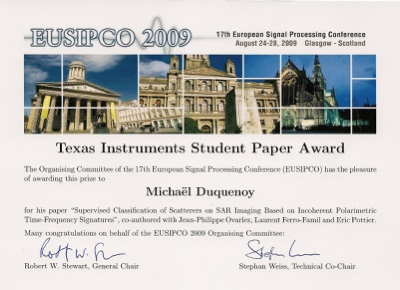
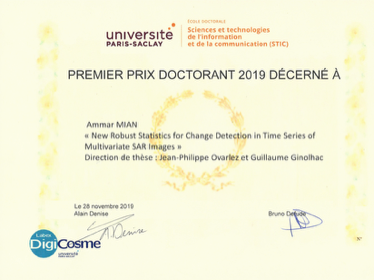
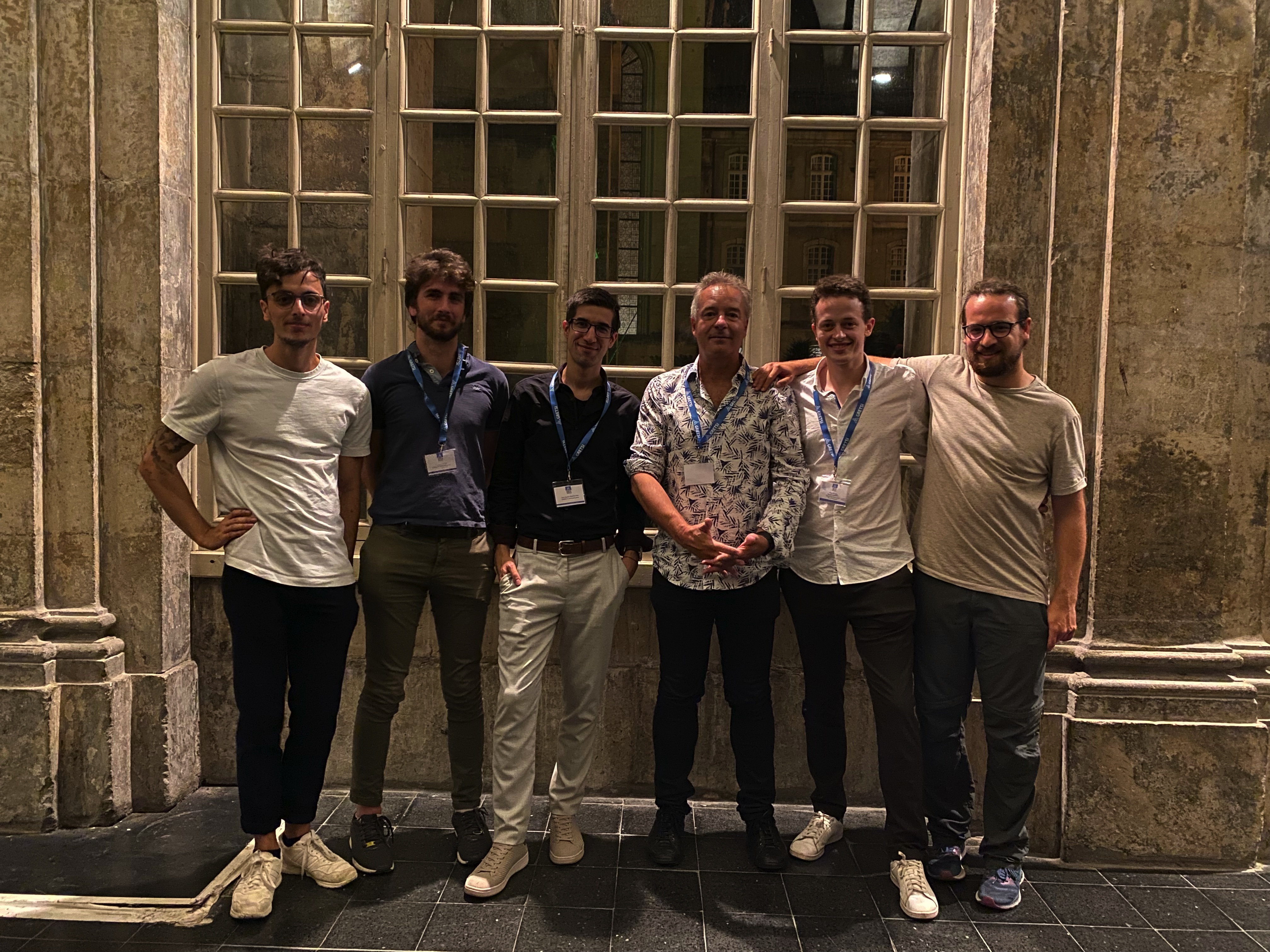
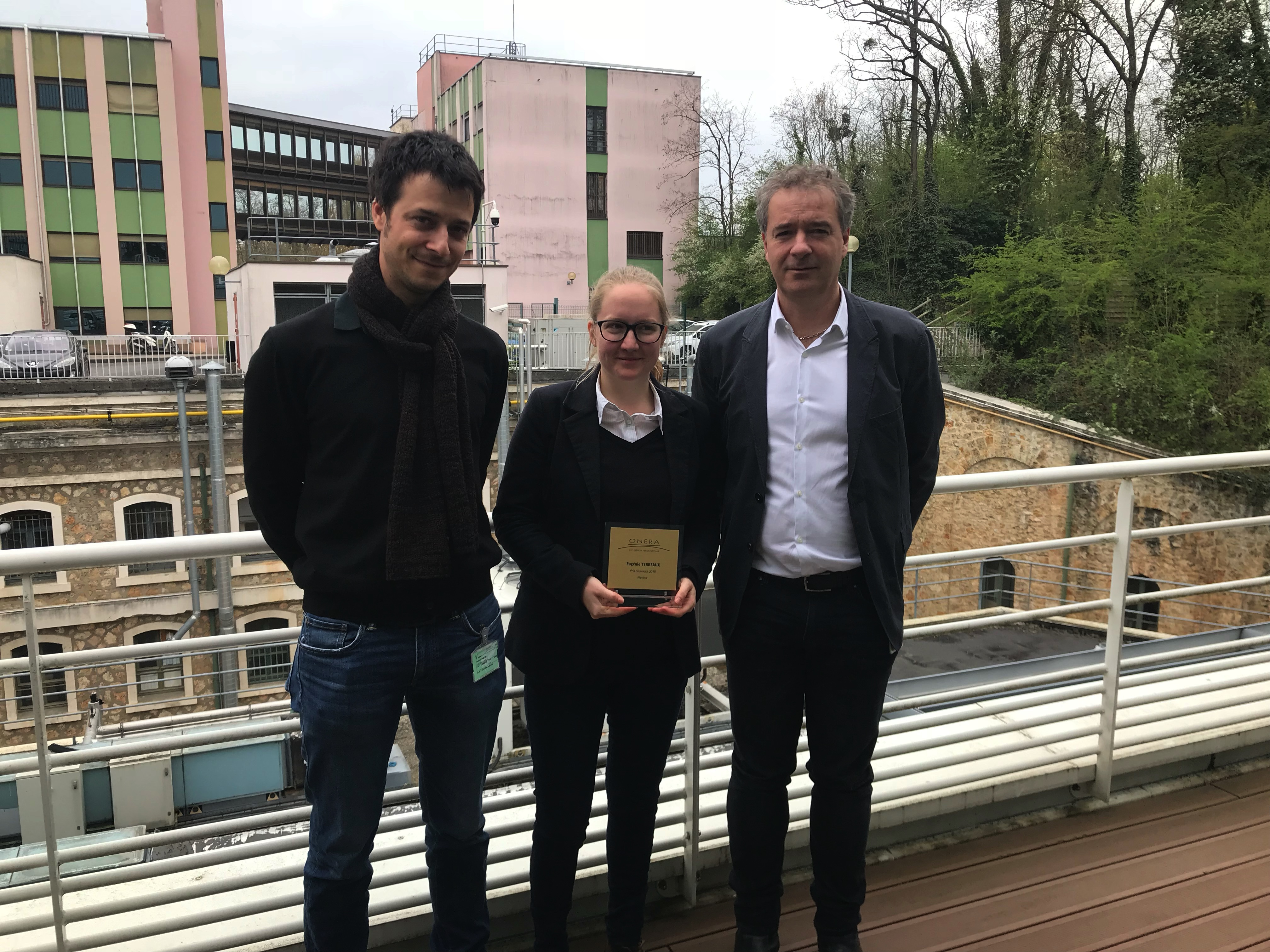
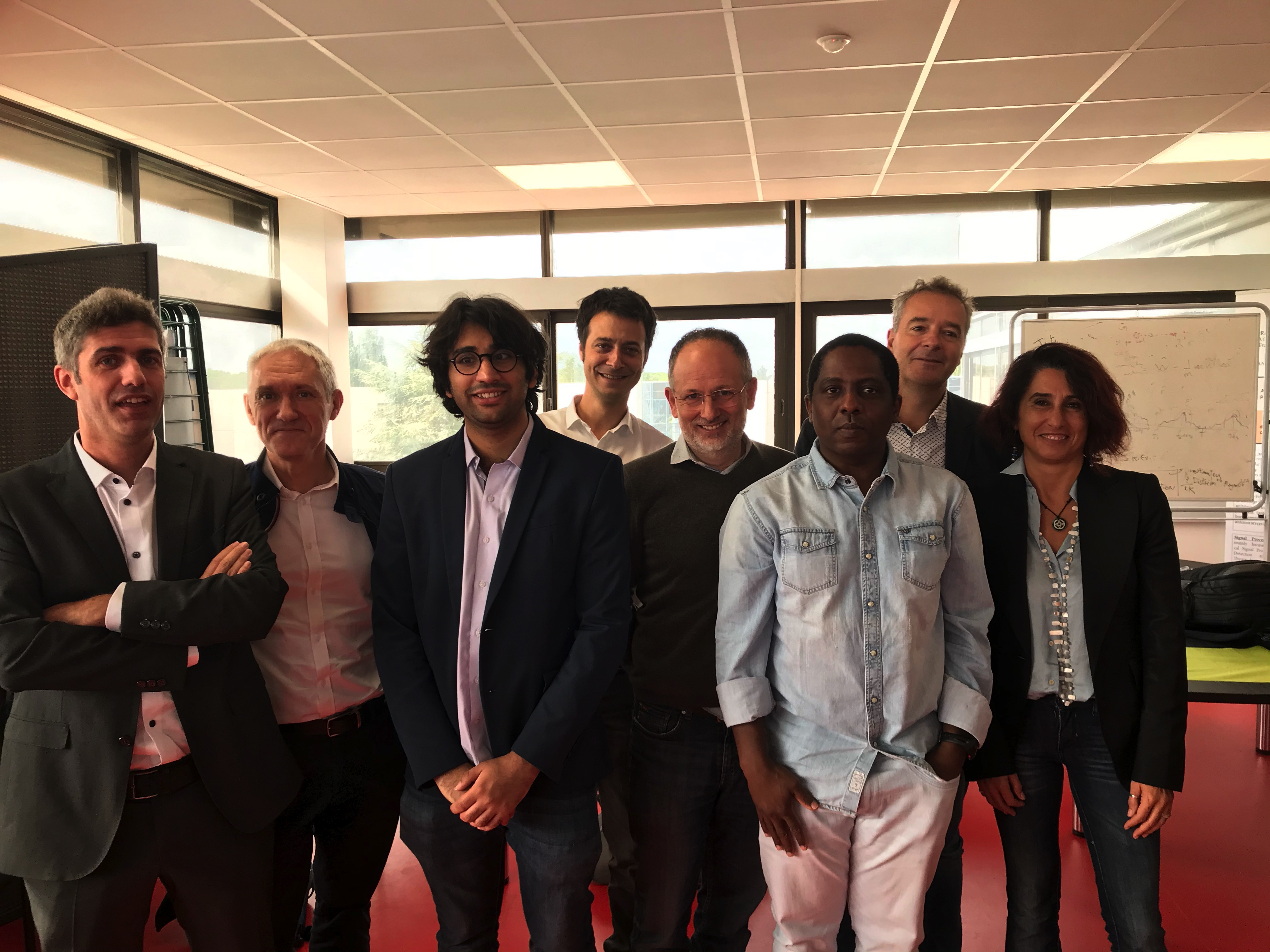
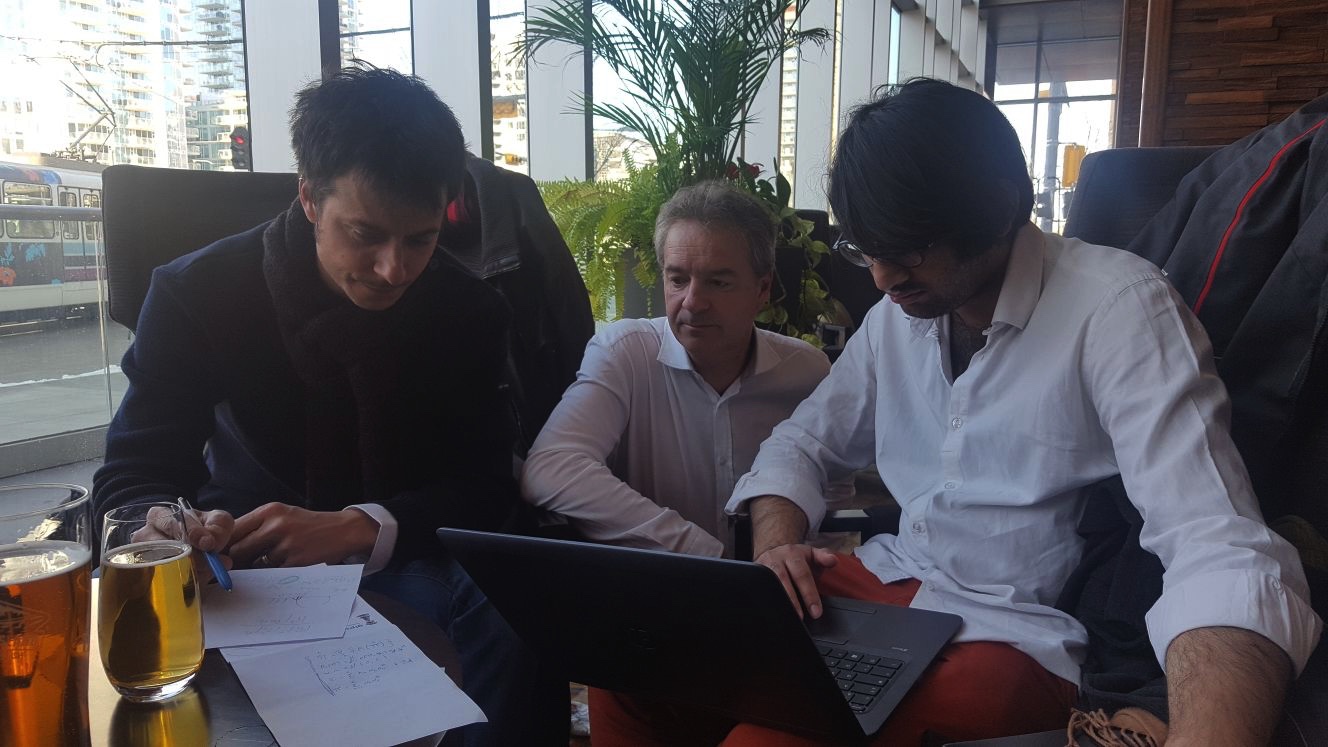

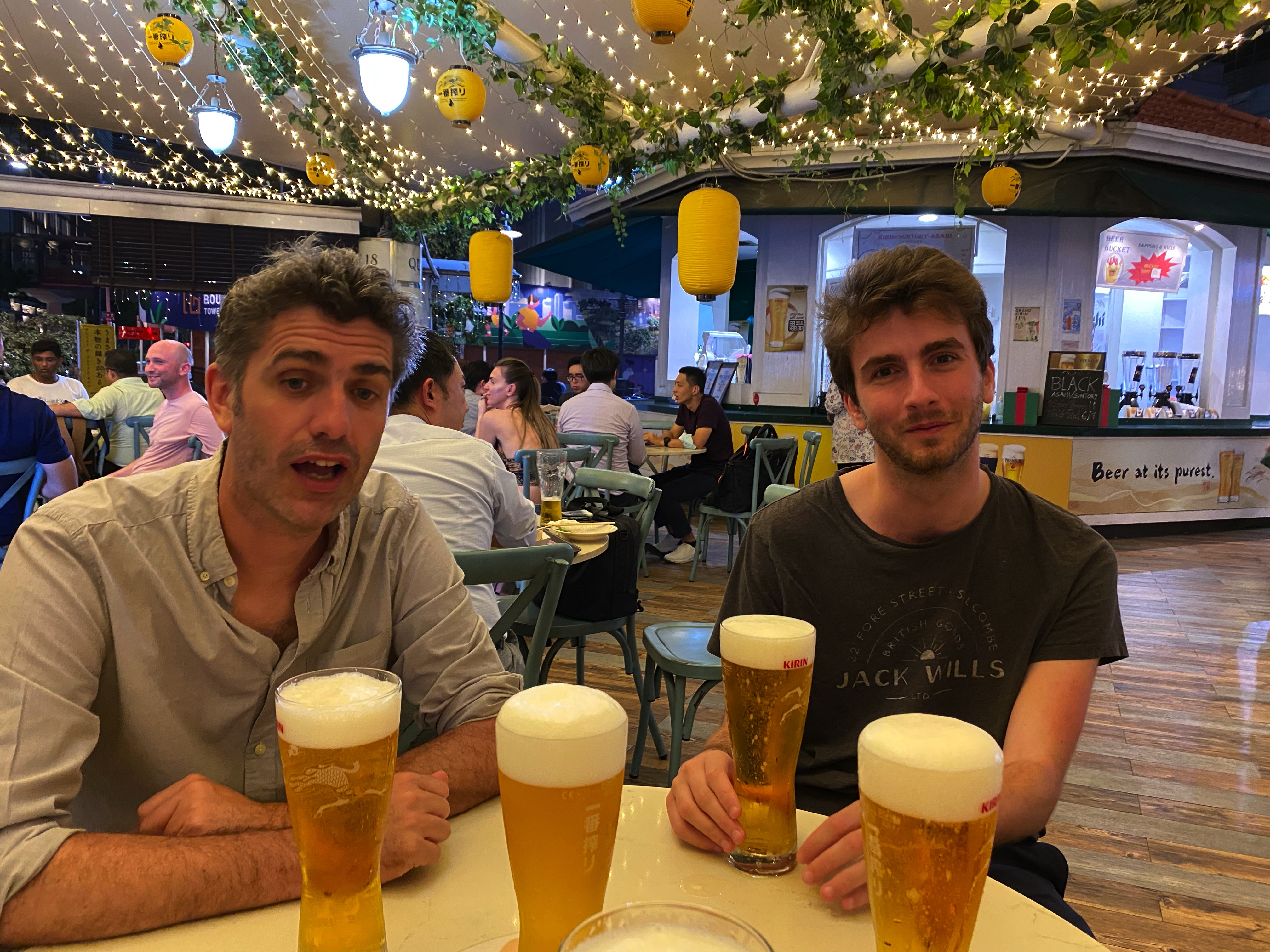
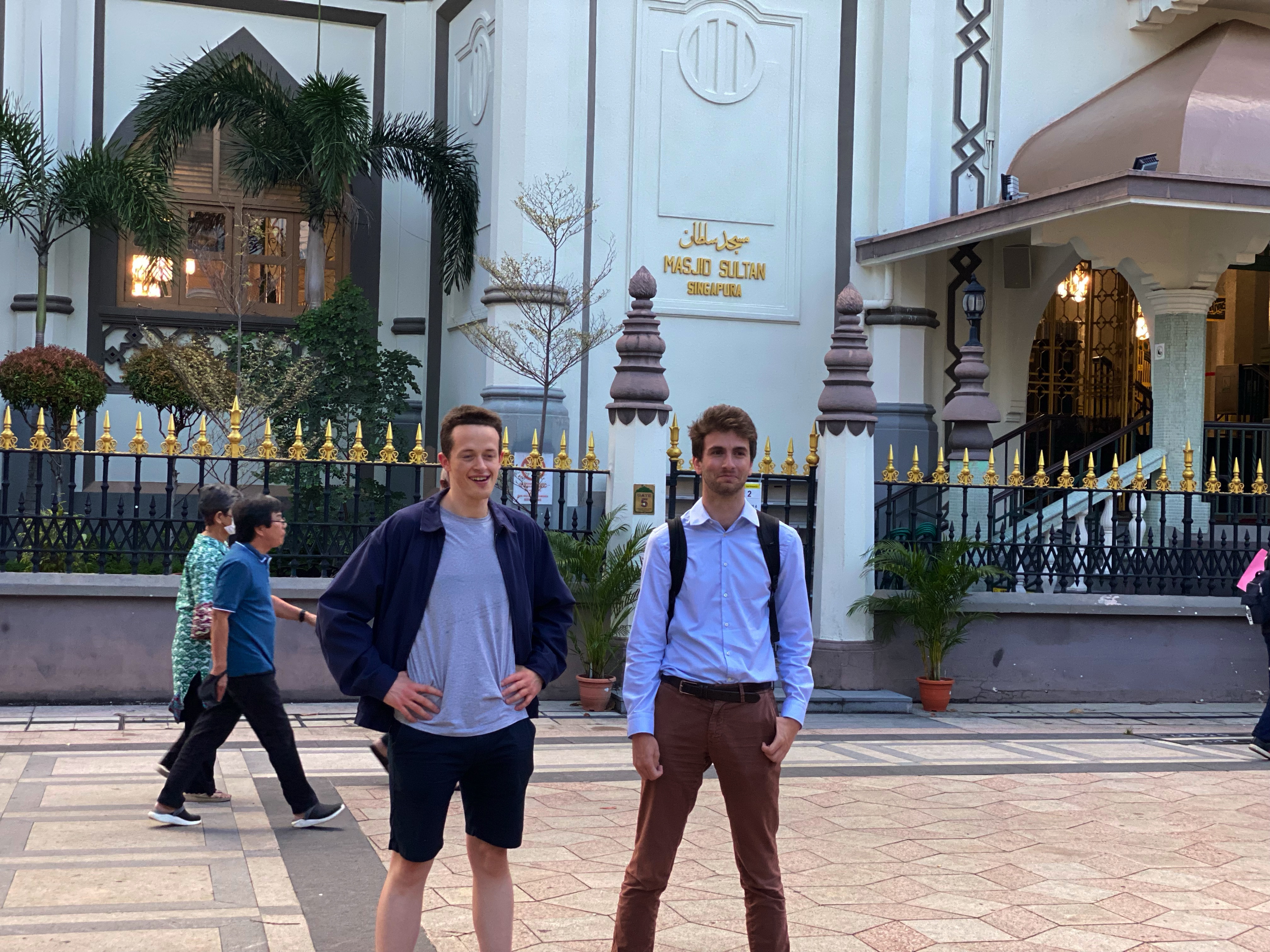


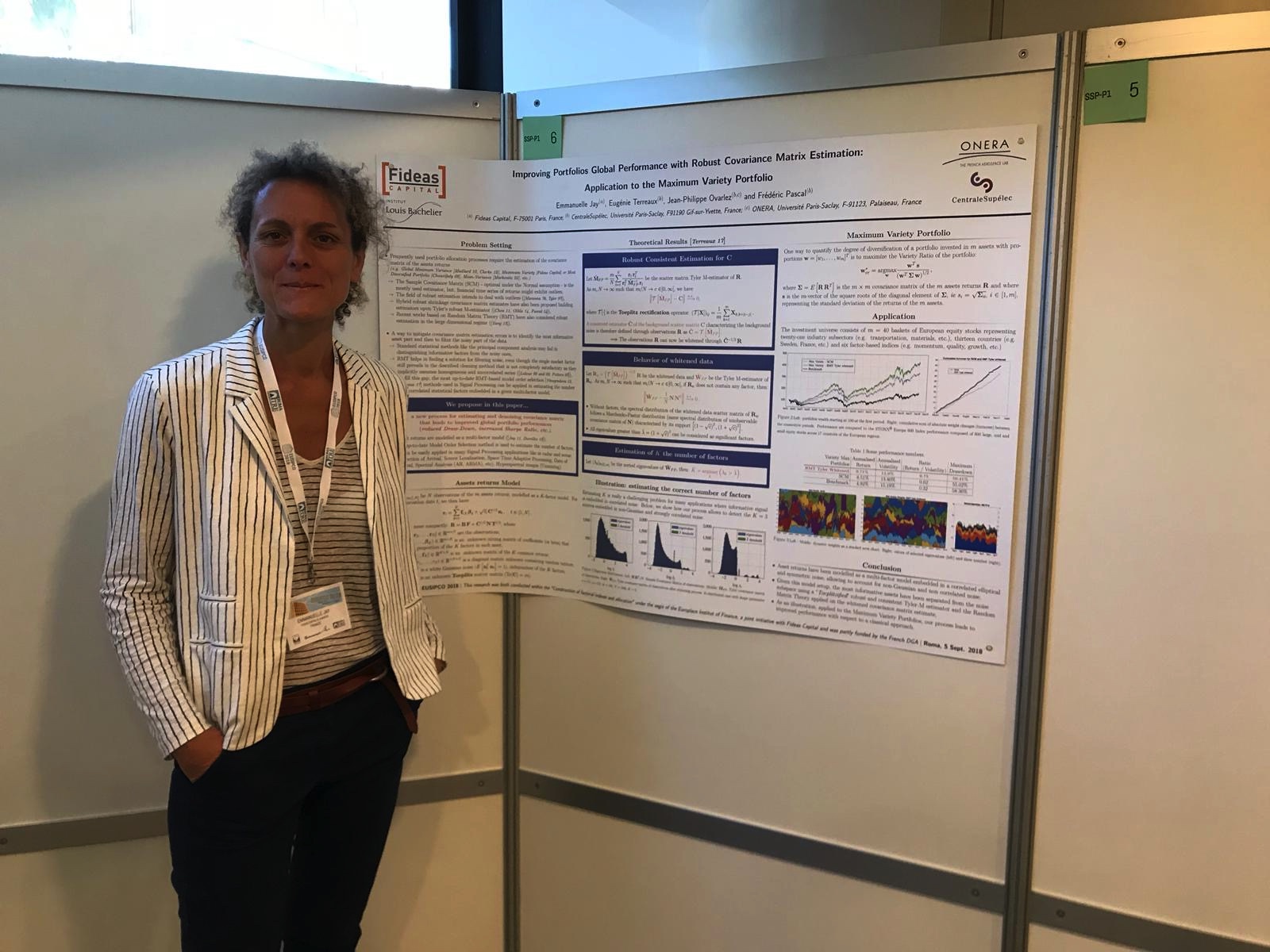



• Thesis Director of Antoine Collas Ph.D. (2019-2022) entitled "Riemannian geometry for statistical estimation and learning: application to remote sensing" in collaboration with Guillaume Ginolhac (co-director), Chengfang Ren from CentraleSupelec/SONDRA and Arnaud Breloy from University of Nanterre (LEME). This thesis has been defended in November 2022 in University of Paris Saclay (CentraleSupélec). (Defense Presentation). 2022 EUSIPCO Best Student Paper Award. [2022-present] Post-doc in INRIA.
Remote sensing systems offer an increased opportunity to record multi-temporal and multi-dimensional images of the earth’s surface. This opportunity greatly increases the interest in data processing tools based on multivariate image time series. In this thesis, we propose a clustering-classification pipeline to segment these data. To do so, robust statistics are estimated and then clustered or classified to obtain a segmentation of the original multivariate image time series. A large part of the thesis is devoted to the theory of Riemannian geometry and its subfield, the information geometry, which studies Riemannian manifolds whose points are probability distributions. It allows to estimate robust statistics very quickly, even on large scale problems, but also to compute Riemannian centers of mass. Indeed, divergences are developed to measure the proximities between the estimated statistics. Then, groups of statistics are averaged by computing their Riemannian centers of mass associated to these divergences. Thus, we adapt classical machine learning algorithms such as the K-means++ or the Nearest centroid classifier to Riemannian manifolds. These algorithms have been implemented for many different combinations of statistics, divergences and Riemannian centers of mass and tested on real datasets such as the Indian pines image and the large crop type mapping dataset Breizhcrops.
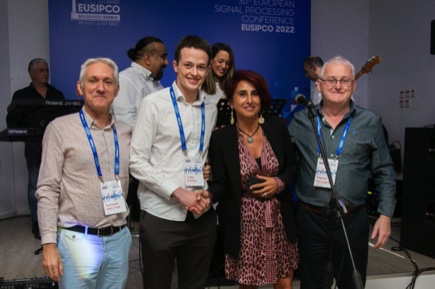
• Thesis Director of José Agustin Barrrachina Ph.D. (2019- 2022) entitled "Complex Valued Neural Networks for Radar Applications" in collaboration with DGA, Chengfang Ren from CentraleSupélec/SONDRA, Christèle Morisseau and Gilles Vieillard from ONERA DEMR, This thesis has been defended in December 2022 in University of Paris Saclay (CentraleSupélec). (Defense Presentation). [2023-present] SAFRAN Data Systems.
Radar signal and SAR image processing generally require complex-valued representations and operations, e.g., Fourier, wavelet transforms, Wiener, matched filters, etc. However, the vast majority of architectures for deep learning are currently based on real-valued operations, which restrict their ability to learn from complex-valued features. Despite the emergence of Complex-Valued Neural Networks (CVNN), their application on radar and SAR still lacks study on their relevance and efficiency. And the comparison against an equivalent Real-Valued Neural Network (RVNN) is usually biased.
In this thesis, we propose to investigate the merits of CVNNs for classifying complex-valued data. We show that CVNNs achieve better performance than their real-valued counterpart for classifying non-circular Gaussian data. We also define a criterion of equivalence between feed-forward fully connected and convolutional CVNNs and RVNNs in terms of trainable parameters while keeping a similar architecture. We statistically compare the performance of equivalent Multi-Layer Perceptrons, Convolutional Neural Networks, and Fully Convolutional Networks for polarimetric SAR image segmentation. SAR image splitting and balancing classes are also studied to avoid learning biases. In parallel, we also proposed an open-source toolbox to facilitate the implementation of CVNNs and the comparison with real-equivalent networks.
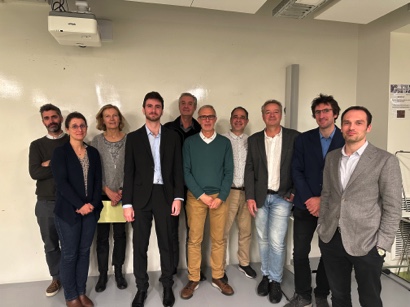
.
• Thesis co-Director of Pierre Develter Ph.D. (2020-2023) entitled "New robust radar processing for model errors: the case of off-grid targets" in collaboration with Philippe Forster (Director) from University of Paris Saclay, Jonathan Bosse and Olivier Rabaste from ONERA. This thesis has been defended in December 2023 in University of Paris Saclay (CentraleSupélec). (Defense presentation). [2024-present] Thales LAS.
.4
.4
.4
.4
.4
.4
.4
.4
.4
.4
.4
.4
.4
.4
.4
.4
.4
.4
.4
The problem of detecting a radar target is classically represented by a binary hypothesis test. When all the parameters are known, to solve this test, we use the likelihood ratio test, optimal in the sense of Neyman-Pearson. However, this case is unrealistic and in an operational context, the hypothesis test will depend on several unknown parameters. A popular strategy is to introduce the maximum likelihood estimators in the detection test: this is the generalized likelihood ratio test (GLRT). When the unknown parameters are non-linear, there is no analytical form for the maximum likelihood estimators. In radar detection, these parameters correspond in particular to the distance and angle of the target or to its Doppler effect. The chosen strategy consists of performing tests for parameter values fixed on a discrete grid. This induces a mismatch between the true target parameters and the parameters under test, which in turn degrades the detection performance of the test.
.4
.The objective of this thesis is to study the impact of grid effects on radar detection, as well as to research and study strategies to counter them. Particular attention is given to the approximation and study of the off-grid GLRT, defined as the classical GLRT tests (such as the Matched Filter and the Normalized Matched Filter) computed on the continuous parameter space of the target. Those tests present the best detection performance known in the literature in the presence of off-grid targets, but, on the one hand, their statistic is difficult to evaluate, and, on the other hand, a precise implementation of those tests seems intense computationally.
SUPERVISIONS OF MASTER STUDENTS INTERNSHIPS
POST-DOC SUPERVISIONS